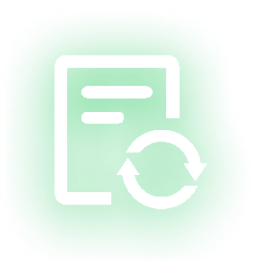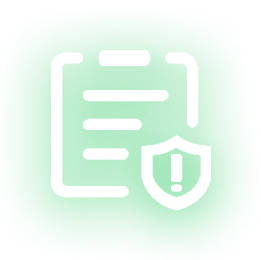All-in-one Website Monitoring Solution
-

- Uptime Monitoring
- Continuously monitor website uptime.
-

- SSL Monitoring
- Ensure SSL certificate validity to prevent browser security warnings.
-

- Domain Monitoring
- Mitigate business continuity and security risks related to domain expiration.
-

- DNS Monitoring
- Retrieve domain resolution status from major DNS providers.
-

- Defacement Monitoring
- The first line of defense against website defacement and unauthorized content changes.
-

- Keyword Monitoring
- Periodically monitor website content for specified keywords.
-

- Data Leak Check
- Protect against leaks of Pll, Cloud Keys, and other sensitive data.
-

- External Link Check
- Monitor changes in external link count and uptime.
-

- Reputation Check
- Assess risk and reputation of referenced IPs and domains.
-

- Malicious Code Check
- Continuously detect malicious code injections.
-

- HTTP Header Check
- Check HTTP security header configuration.
-

- Website Technology Check
- Analyze website technology stack.
Knowledge Hub > Community
Explore educational articles to deepen your understanding in technical domains.
-
5 Key Metrics for SMEs to Choose Website Monitoring Tools
For small and medium-sized enterprises (SMEs), a website isn’t just a digital brochure—it’s often the backbone of customer engagement, sales, and brand reputation. Yet, many SMEs overlook a critical component of website success: proactive monitoring. Without proper website monitoring tools, technical issues like downtime, slow loading, or broken links can go unnoticed, costing revenue, customer trust, and market share.
-
Common Pitfalls in Website Monitoring: How to Avoid Blind Spots?
A functioning website is the bedrock of digital operations, customer trust, and revenue. While most organizations understand the need for website monitoring, simply having some checks in place is far from sufficient. A poorly designed system risks missing threats, performance degradation, or compliance gaps—jeopardizing user trust and business continuity. Below, let’s unpack these common pitfalls in website monitoring and overcome them with proactive strategies.
-
Why Are More Operators Adopting Website Monitoring Tools?
In the digital-first era, website availability is a critical determinant of business success. However, as cyber threats grow more sophisticated and user expectations soar, website downtime, vulnerabilities, or even minor performance hiccups can lead to catastrophic consequences. To combat these challenges, website operators are turning to online monitoring tools at an unprecedented rate. Let’s explore why proactive website monitoring has become a mission-critical strategy for businesses worldwide. The Rising Stakes of Website Downtime Modern users have zero tolerance for slow or inaccessible websites. According to industry studies, more than half of visitors will leave if the website takes longer than three seconds to load, while even minutes of downtime can cost enterprises thousands in lost revenue. For e-commerce platforms, the stakes are higher: a single hour of outage during peak traffic could mean millions in missed sales. Website monitoring tools address this by tracking uptime and response times across globally distributed nodes. By detecting outages or latency spikes in real time, alerting operations teams the moment a site becomes unreachable, businesses can resolve issues before they escalate to ensure global users enjoy seamless access. Security Threats Demand 24/7 Vigilance Search engines penalize slow or compromised websites. Prolonged downtime can plummet search rankings, while unexpected content changes harm credibility, taking months to recovery. Website monitoring tools track target keywords and malicious code with the help of web crawling technology, alerting operations teams to ranking drops caused by algorithm updates or compromised content. However, regulatory frameworks like PCI DSS, HIPAA, and GDPR mandate stringent website security and data protection measures.Combined with SSL monitoring, keyword monitoring, data leak check, and real-time alerts, website operators can ensure timely resolution of risks and reduce legal and financial risks. Preserving Brand Reputation & Compliance Search engines penalize slow or compromised websites. Prolonged downtime can plummet search rankings, while unexpected content changes harm credibility, taking months to recovery.…


